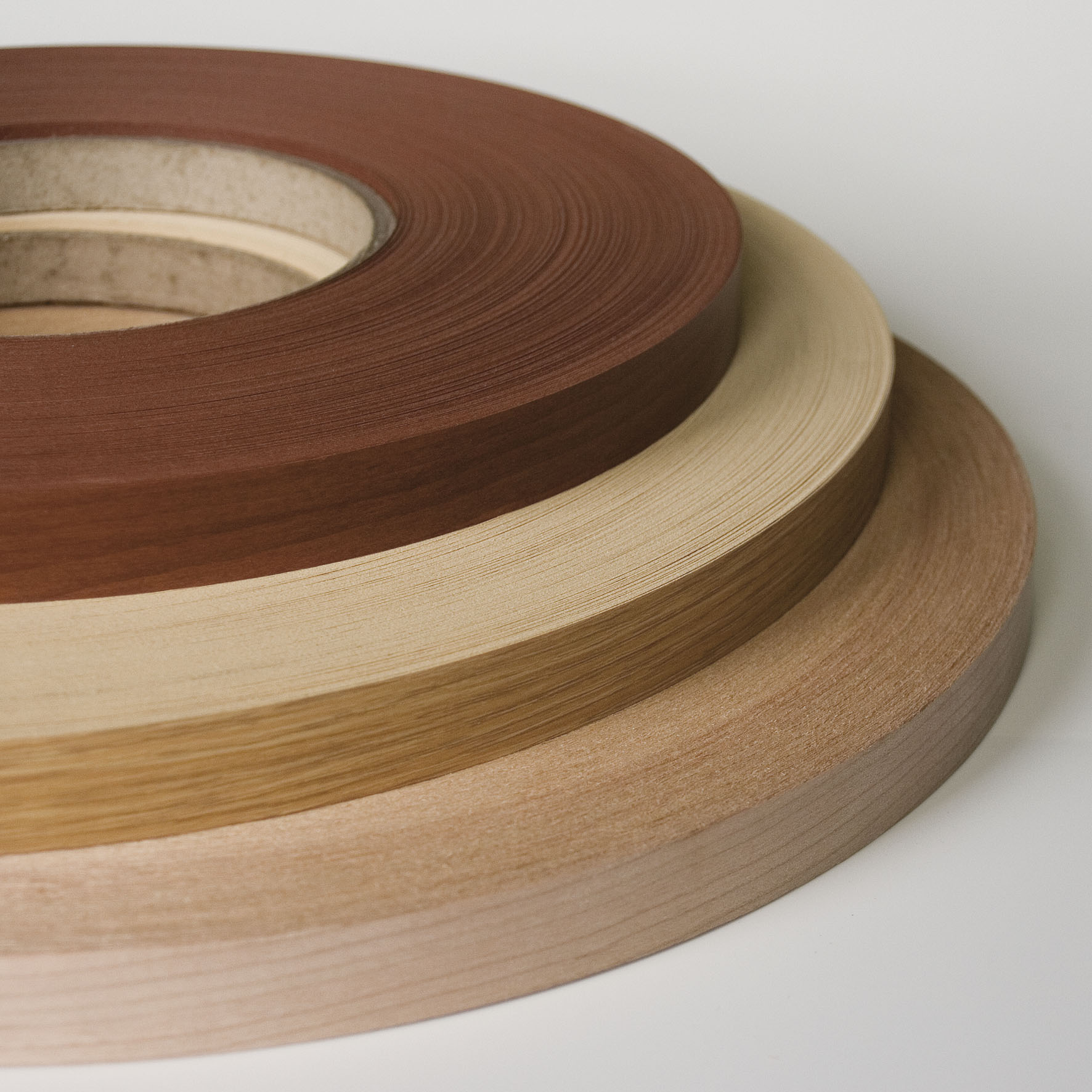


Edgebanding is an essential process in the furniture and cabinetry industry, crucial for both aesthetic and functional purposes. It involves applying a narrow strip of material to the edges of panels or boards, typically made of particleboard, MDF (medium-density fiberboard), or plywood, to cover the exposed edges and provide a finished look. This article delves into what edgebanding is, its importance, and a closer look at two popular types: veneer edgebanding and PVC edgebanding.
What is Edgebanding?
Edgebanding is the application of a thin material, called edgeband, to the raw edges of furniture panels. This process not only enhances the visual appeal of the furniture by providing a clean, finished look but also protects the edges from damage, moisture, and wear over time. The materials used for edgebanding vary widely, with common options including wood veneer, PVC (polyvinyl chloride), ABS (acrylonitrile butadiene styrene), melamine, and acrylic.
Why is Edgebanding Important?
- Aesthetic Appeal: Edgebanding significantly improves the appearance of furniture, making it look polished and professional. It allows for seamless integration with the surface material, enhancing the overall design.
- Durability and Protection: The application of edge banding protects the edges of panels from chipping, moisture, and other potential damage. This extends the lifespan of the furniture and keeps it looking new for longer.
- Safety: Covering sharp or rough edges with edge banding materials can prevent injuries, making the furniture safer to use, especially in environments with children.
- Versatility in Design: Edgebanding provides flexibility in design by allowing for different colors, textures, and finishes to match or contrast with the surface material. This opens up numerous possibilities for creative and customized furniture designs.
Veneer Edgebanding
Veneer edgebanding is made from thin slices of real wood, providing an authentic wood grain appearance. This type of edgebanding is particularly popular for high-end furniture and cabinetry due to its natural look and feel.
Advantages of Veneer Edgebanding:
- Natural Aesthetic: Veneer edgebanding offers the beauty and warmth of real wood, making it an excellent choice for projects requiring a premium, high-quality finish.
- Stainable: It can be stained or finished to match the surface of the furniture, ensuring a consistent appearance.
- Eco-Friendly: As a natural product, veneer edge banding is biodegradable and environmentally friendly.
Disadvantages of Veneer Edgebanding:
- Cost: Veneer edgebanding can be more expensive than synthetic options.
- Durability: While beautiful, veneer is less resistant to impact and moisture compared to synthetic materials and may require more maintenance.
PVC Edgebanding
PVC (polyvinyl chloride) edgebanding is a popular synthetic option known for its durability and versatility. It is available in various colors, patterns, and finishes, making it suitable for a wide range of applications.
Advantages of PVC Edgebanding:
- Durability: PVC is highly resistant to impact, moisture, and chemicals, making it ideal for high-traffic areas and environments prone to spills or humidity.
- Variety: It comes in a vast array of colors and patterns, including wood grain imitations, allowing for endless design possibilities.
- Cost-Effective: Generally, PVC edgebanding is more affordable than veneer and offers a good balance of performance and aesthetics.
Disadvantages of PVC Edgebanding:
- Appearance: While it can mimic the look of real wood, it may not have the same authenticity as veneer.
- Environmental Concerns: PVC is a plastic material and is not biodegradable. Its production and disposal can have environmental impacts.
Conclusion
Edgebanding is a critical component in the manufacturing of modern furniture and cabinetry. It enhances the visual appeal, durability, and safety of the finished product. Veneer and PVC edgebanding are two popular choices, each with its own set of advantages and considerations. Veneer offers a natural, high-end finish suitable for premium projects, while PVC provides durability and versatility at a more affordable price point. Understanding the unique properties of each type can help in selecting the right edge banding material for any project, ensuring both functionality and aesthetic satisfaction.